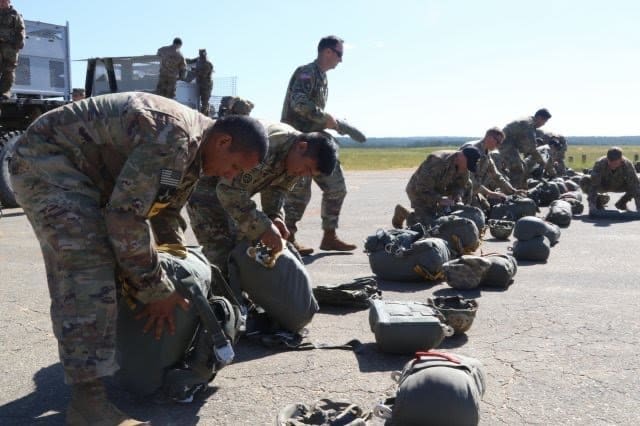FORT BRAGG, N.C. — According to U.S. Army Medical Research and Materiel Command, bleeding is the leading case of death on the battlefield. When service members receive serious wounds, they are often transported to a surgical team for treatment. These casualties often suffer from severe blood loss due to the inability of their blood to clot normally, which represent approximately 40 percent of combat casualties.
The USAMRMC says frozen blood is currently the standard for treatment. But due to technical and logistical limitations, the demand for a more transportable plasma product with the same hemostatic properties grew.

The U.S. Army Medical Materiel Development Activity, along with a partner company, are testing transportation methods to deliver freeze dried plasma, or FDP, to address this issue and increase the survival rate of wounded Soldiers.
New Roads, Louisiana native Cpt. Robert Crochet, a primary medical test officer, and an Army Medical Department Board – alongside medical personnel assigned to the 432nd Blood Support Detachment, 44th Med. Brigade at Fort Bragg – are testing FDP’s ability to be transported safely and quickly using means that were previously dismissed due to risk of breakage.
Currently used is French frozen plasma, which is contained inside glass tubes, unlike the new FDP, which is sealed inside a ready-to-use bag along with a 250ml bag of sterile water for injection and rehydrating. These are then stored inside a hard plastic sheath designed to protect the product during transport.
For the test mission, Soldiers of the 432nd BSD rehydrated the FDP and packaged it, then waited for transportation by a CH-47 Chinook helicopter. The airborne Soldiers from Fort Bragg then jumped out of the Chinook with the plasma packed in their bags. Upon landing, Crochet and his team inspected the containers and the FDP for signs of damage. They reported their findings to members of the research and development teams for on-sight data collection.
“Tourniquets helped in enhancing survivability for our war fighters, but it’s blood that keeps them alive,” said Col. Roberto E. Marin, material systems branch chief, AMEDD Board.
According to USAMRMC, there is no current method to supply troops in the battlefield with FFB; it has to be maintained by role 2 medical facilities, advanced trauma management and emergency medical treatment, with the ability to freeze and store the blood at constant temperatures. Medical teams operating in a Role 1, unit-level medical care, do not have the ability to store FFB, thus limiting treatment available for wounded Soldiers, according to USAMRMC officials.
Another disadvantage with FFB is the amount of time required to prepare the blood for use on wounded soldiers.
“Currently FFB takes roughly thirty minutes to thaw for surgical use,” Crochet. “With freeze dried plasma, it takes roughly 1-6 minutes to rehydrate and become ready to administer to the casualty. Those minutes can be the difference in life or death.”
Currently FDP and it’s airborne delivery method is still in the testing phase.
By SGT Brian Micheliche


Y’all have my full respect for this kind of work and testing. Our value on life is one of the things that makes us great.
So excited to see this product continuing through development and getting to this testing phase. Awesome job!
Any word on how the testing actually went?